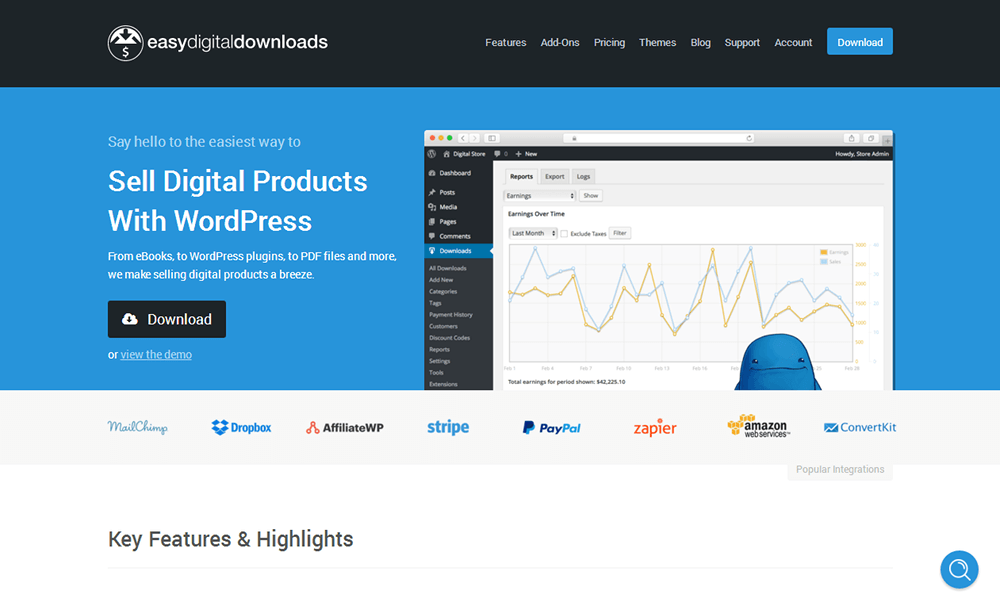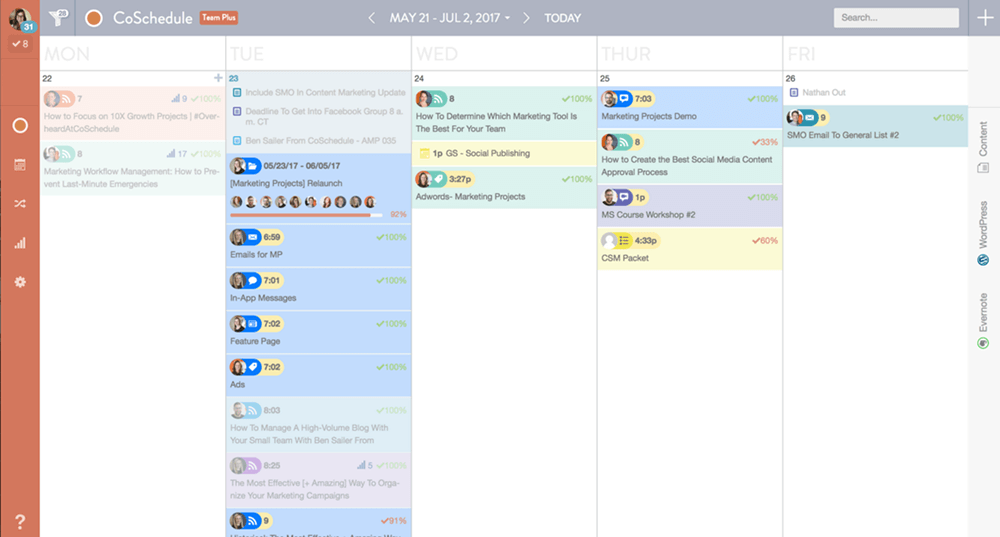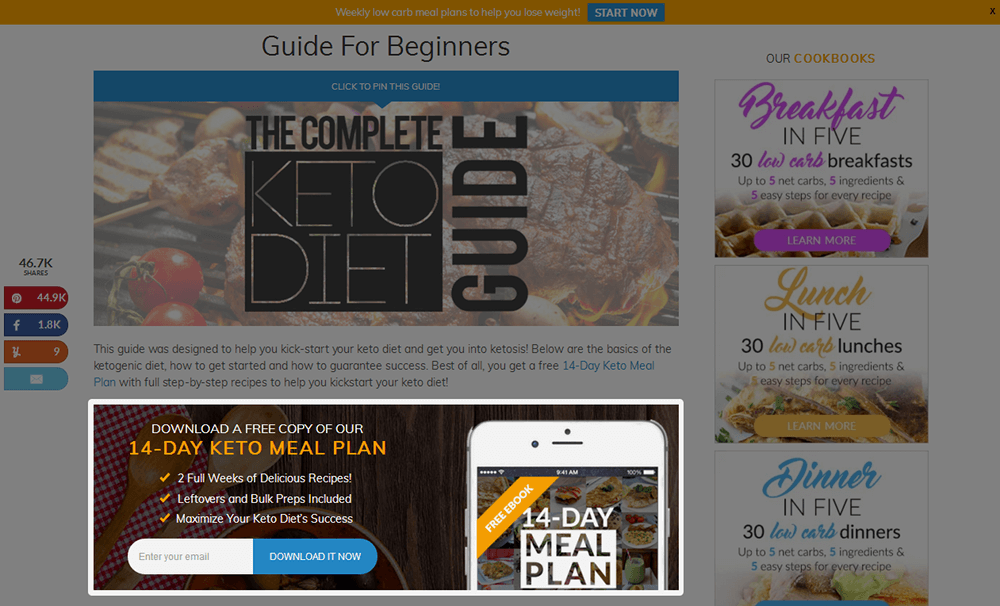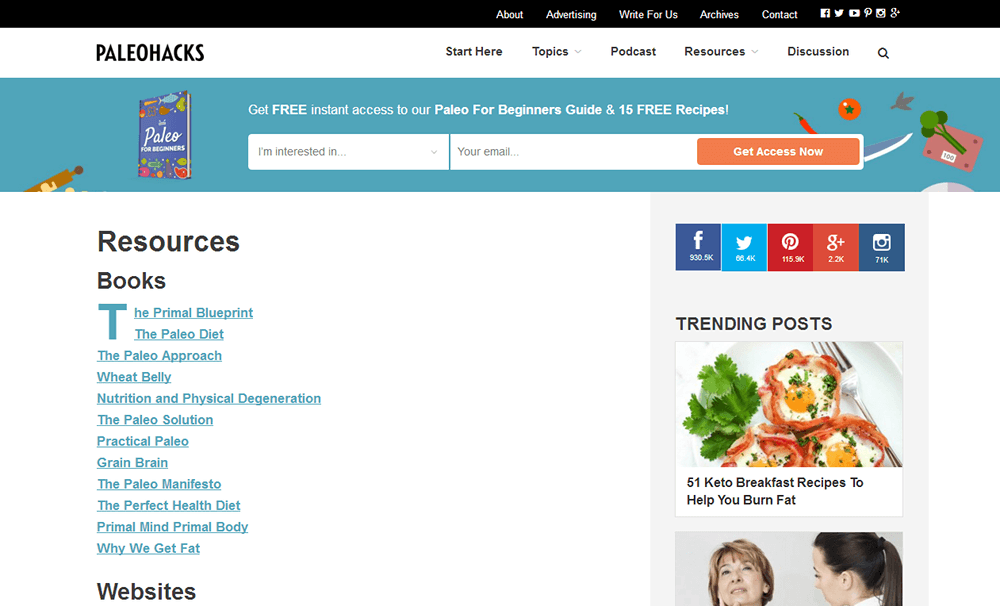Blogging is a lucrative business, even as popularity in video marketing and podcasting are on the rise. It also happens to be the one of the oldest and most popular forms of content marketing. This is due to how effective it’s been for small and big-time blogs alike as well as how cheap it is compared to other forms of marketing. These are probably a few of the reasons why you want to start a blog yourself, but how do you become successful as a blogger? That’s what we’re going to explore in this post.
We’ll start by talking about what makes a blog successful as well as the many different forms success has. We’ll also touch base on the basic formula many blogs use to find success before jumping into our list of the 7 steps you should take to ensure the success of your own blog. Let’s get into it.
What Makes a Blog Successful?
If you look at a few articles with the title “How to Become a Successful Blogger,” you may find a good portion of them focusing on how to get a domain name, purchase a hosting account and all that jazz. While these things do affect how you blog, they have very little impact on your ability to grow your blog. I do, however, recommend steering clear of free blogging platforms like WordPress.com and Blogger as their limitations will affect your ability to grow.

Instead, we should focus on the components that make a blog successful and determine how we can implement those components into our own blogs. You probably won’t be surprised to hear that an important measurement of success is revenue.
The reasoning behind this is simple. If your aren’t earning money, you’re not truly “in business.” Your blog is merely a hobby you do in your spare time. On the other hand, how much revenue you need to earn to be considered a success depends on the amount of money you need to survive and the expenses your business has. Basically, as long as you still have money leftover after paying your personal and business bills, you’re golden.
Other measurements of success can include traffic, user engagement, social shares and email subscribers, but it all depends on your business goals in actuality. Do you want to sell more of your own products through your blog? Your version of success is going to include a healthy amount of revenue from those products alongside a decent-sized email list and a high level of user engagement. Do you want to simply earn more revenue from your blog as a whole? Your version of success would include high amounts traffic and user engagement.
The Formula for Success
We’re going to go through seven specific steps you can take to find your own path to success, but first, let’s take a look at a common path most successful blogs have taken. It starts with a problem to solve and a product or affiliate product to sell. Ideally, this product is designed to solve that problem. Next, these sites use their blogs to provide free, valuable, high-quality content and use things like SEO, social media, guest posts and even paid ads to drive traffic to their websites.
Next, they’ll use a well-designed website, social share buttons, their comment section and email forms to increase user engagement. Lastly, they’ll acquire some customers right off the bat but will acquire the rest through their email list where they’ll nurture them into customers.
That’s the basic formula you’ll see many blogs use. Let’s discover how you can recreate it yourself.
#1: Define Your Niche
It’s hard to get noticed when you cover topics on a broad scale. Everyone has their own set of problems, and every blog is trying to solve them. What you need is a niche that will help you target a specific market in the broader topic your niche belongs in. It’s important for you to define your niche before you start blogging or in the early stages of your blog, at the very least.
Don’t simply start a blog about weight loss. Start a blog targeting people trying to lose weight with the keto diet, no equipment workouts or strength training. Don’t start a blog about gardening. Start a blog about urban gardening, growing your own food or growing a specific type of plant. Basically, consider the broad topic you want to start a blog about, and find a niche market within that topic to target.
It’s not necessary, but it will make things much easier if you are very passionate about your niche. It’s easier to write about something that you love, care about, and want to share with others. Brooke of Plank & Pillow wrote a great blog article about her passion for homes and how she decided to turn that passion into a blog.
If you need help defining your niche, be sure to read our post on how to find your blog niche.
#2: Know Your Audience Inside and Out
This step should come after defining your niche. Once you know who you’re targeting, you can get to work on finding out about all of the individual problems they’re having and pinpointing their top pain points. Why is this important? People read blogs, watch videos and buy products to solve the problems they’re having. You could simply blog about what you feel would be most popular and create products you feel would be most profitable, but having definitive proof on what your audience cares about the most is a much better way to ensure success.
You can actually start getting to know your audience before you even launch your blog by becoming active where they hang out online. Try forums tailored to your niche, Facebook groups, Quora, Reddit, Stack Exchange and similar sites. You can also try to form in-person relationships in your niche. Once you start blogging, take the time to ask your email subscribers and commenters what their biggest problems are.
#3: Have Something to Sell
This isn’t something you necessarily need before you start a blog, but it is something you should implement as soon as possible. “Something to sell” may refer to your own products, affiliate products or even your sponsors’ products. It doesn’t matter whose product it is so long as it’s generating revenue for you. As a side note, affiliate marketing is the cheapest way for new and young blogs to start generating revenue. Be sure to read through our guide on how to get started with affiliate marketing for more information on that.
Having something to sell will give you something to plan your content marketing and email marketing strategies around. Let’s say you want to sell a full recipe book for the keto diet. So, you publish a post on your “Top 5 Hacks for the Keto Diet” and offer a seven-day keto breakfast plan as a lead magnet to attract subscribers to your email list. You send the breakfast recipes to your leads over a period of seven days and advertise your book at the end of it.
The best part about this? Because you knew the goal you wanted to accomplish (selling your book), you knew which post to write, which lead magnet to create and which post to offer that lead magnet on. This allowed you to build a segment in your email list full of leads who were most likely to purchase your book.
#4: Create a Content Marketing Strategy
This step should have been obvious by this point in the article. Again, creating content or products based on what you feel would be most successful is risky. It’s next to impossible to replicate what another, more successful blog is doing and expect the same results for yourself. It’s better to know who you’re targeting, what their biggest pain points are and what products you want to use to target those pain points. A content marketing strategy will help you plan more effectively.
Be sure to read our guide on how to create a content marketing strategy. We’ll sum it up here in the meantime. Basically, what you want to do is come up with a list of blog posts that target your audience’s pain points and can act as valuable advertisements for the product(s) you want to sell.
One thing I recommend doing when you plan your editorial calendar is to make sure you’re publishing consistently. You don’t need to publish frequently, but if you’re publishing once a week, make sure it’s on the same day every week. Devoted audiences like to know when they can expect new content from their favorite bloggers.
#5: Focus On One Channel at a Time
This relates to content marketing as much it does social media. You may see top blogs publishing blog posts, YouTube videos and podcast episodes every week while killing it on every social media platform imaginable. What you don’t see is the fact that these bloggers work full time on their blogs and hire employees or contractors to take care of the things they don’t have time for.
That means, once again, you shouldn’t try to replicate what another blog is doing. Instead, you should choose one channel to focus on and master it before implementing additional channels. You’re obviously reading this post because you want to start to blog, which means you shouldn’t move into video marketing or podcasting until you’re publishing consistently and generating a consistent amount of traffic.
The same is true for social media. Find out which social media platform your audience uses the most and grow a healthy following there before trying to target additional platforms.
#6: Don’t Be Afraid to Offer Free Content
Some bloggers may scoff at the idea of giving away anything for free, but it’s actually one of the most effective ways to grow an audience. This is because most Internet users aren’t going to take a chance on a product from a blogger they’ve never encountered unless that blogger has some form of social proof. Instead, you should fill your blog with free content your readers can use as “free samples” of your products or affiliate products.
Start with your blog by offering plenty of free, valuable, high-quality content your readers have access to without needing to subscribe to your email list. When it comes to your email list, it’s best to offer free content in the form of things like ebooks and courses.
#7: Create Actionable Pages
This is a big reason why I recommend building your blog with a platform that allows you to build a proper, fully-fledged website rather than a blog with a few simple pages. Platforms like WordPress.org allow you to build beautiful pages designed to captivate and convert your readers as they scroll through them. You can do this with page builders, email marketing plugins, plugins that help you manage and cloak affiliate links, and more.
These types of tools will help you build two essential pages too few blogs use. They are the Start Here page and the Resources page. Creating Home, About, Blog and Contact pages are obvious. The Start Here page, on the other hand, allows you to build a page full of links to your greatest and most valuable content. It can help you highlight the content you want to convert. The Resources page is one you can use to build a list of links (including affiliate links) for the tools you use in your niche as well as anything else you feel would be useful to your audience, such as books and courses.
Final Thoughts
That concludes our official list of the steps you should take to become a successful blogger, but let’s go over a few honorable mentions we couldn’t squeeze into the list. For starters, growing your email list is an obvious one. It’ll help you turn casual visitors into regular readers and eventually customers. Read our posts on how to create an email marketing strategy and how to start an email list for free for more information.
Next up is staying up to date with your industry. This means continuing to learn and grow no matter how much of an expert you become by following other bloggers, reading books and listening to podcasts in your niche.
Lastly, don’t be afraid or too shy to integrate your personality into your brand, and yes, your blog is your brand. Consumers want to buy products from brands they trust, and there are few greater ways to form relationships with them than by sharing your own thoughts and personal struggles in your niche, showing more of yourself, and generally being as authentic and transparent as possible.
That’s it for this post. Be sure to read through all of the articles we mentioned to optimize the way you implement these steps and ensure your path to success.








